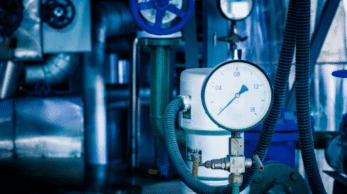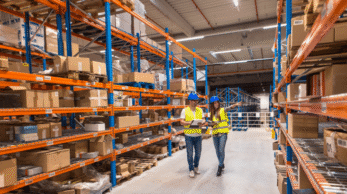Today CMMS are key to the maintenance function in the industrial sector. CMMS assist maintenance teams in keeping their production assets, such as machines, robots, infrastructures in operational conditions and are thus, directly responsible for productivity gains and cost reductions, effectively contributing to improving industrial performance.
Optimized industrial maintenance to reduce production costs
Control of costs tied to maintenance represents a major challenge for companies, and additional costs related to malfunctions on the production line or machine stoppage only further complexify the issue.
To avoid paying substantial overhead fees, companies need to rethink their maintenance organization and strategy accordingly. In this context, many organizations are adopting the principles of TPM (Total Productive Maintenance), which aims to maximize the efficiency of equipment through proactive and preventive measures.
The objective behind maintenance activity is to guarantee equipment availability and reliability, for increased equipment life and quality production. CMMS empower the maintenance department to do just that, optimizing industrial maintenance and cutting down production costs in the process.
Preventive maintenance
Any industrial machine breakdown weakens the company’s productivity and further generates costs that often are very penalizing. Rather than improving repairment processes (corrective maintenance), it is therefore much more rewarding to stop the problem from happening in the first place. CMMS help maintenance teams regularly carry out preventive maintenance tasks across the equipment fleet. Benefits are numerous, including:
- reduction of machinery failures and related costs;
- reduction of corrective maintenance operations;
- increased reliability of the machine fleet;
- significant productivity improvements.
CMMS for the continuous improvement of maintenance operations
The performance of a production system can dictate the life or death of an industrial company. Maintenance of the production assets is therefore critical, and this is where CMMS come in, as they:
- facilitate the management of the maintenance department;
- improve inventory management;
- optimize the planning of maintenance activities;
- help control costs.
Industry of the future: a scalable CMMS to meet new challenges
While we talk a lot about corrective and preventive maintenance today, a new, predictive, type has been emerging to answer the challenges of Industry 4.0. The advantage of predictive maintenance lies in its ability to anticipate breakdowns by capturing the weak signals of a machine. This eliminates the need for pre-planned intervention schedules and the risk of over-maintenance, as technicians “just need to be at the right place at the right time”.
This innovative approach to maintenance was only made possible thanks to the development of 4.0 Tools, including the Internet of Things (IoT) with its embedded sensors. Fortunately, CMMS can easily integrate or connect with these 4.0 Tools, to:
- Raise the alarm and initiate interventions when certain values are reached. This allows you to optimize your maintenance activity and save considerable time;
- Access information in real-time, away from the office and via mobile, tablet, or computer;
- Analyze all the data collected in the CMMS.
Achieving key industrial maintenance objectives with CMMS
Today, we estimate that half of the industrial companies in France are still not equipped with a structured or complete CMMS solution. That leaves us with many organizations for us to equip, support, modernize, and convince too, since CMMS have truly become essential in the industrial sector, in particular for professions tied to the production, management, or technical side of the business. CMMS can help employees:
- Know and identify the equipment to be maintained.
- Have an up-to-date maintenance log for each piece of equipment, to ensure traceability of the history and costs related to maintenance operations.
- Centralize the technical, administrative, and financial documentation of the equipment
- In the context of preventive maintenance, define the periodic maintenance to be carried out on the equipment, such as lubrication, cleaning, checks, quality control, or regulatory controls.
- Collect and process requests for interventions from operators, including troubleshooting, corrective maintenance, and upgrading.
- Coordinate the work of both internal (maintenance technicians) and external (subcontractors, manufacturers, audit offices, etc.) parties.
- Manage spare parts inventory and set up replenishment alerts to avoid stock-outs.
- Measure, analyze and optimize maintenance activity in terms of work hours, costs and savings generated by the maintenance department, as well as team responsiveness, reliability, availability, and equipment life.
- Make safe decisions regarding the allocation of internal and external maintenance budget for equipment, the choice of a supplier/ subcontractor/ manufacturer, equipment renewal, etc.
Our CMMS solutions can make all of the above and more, effectively improving industrial performance, modernizing existing information systems, and accelerating digital transformation!




